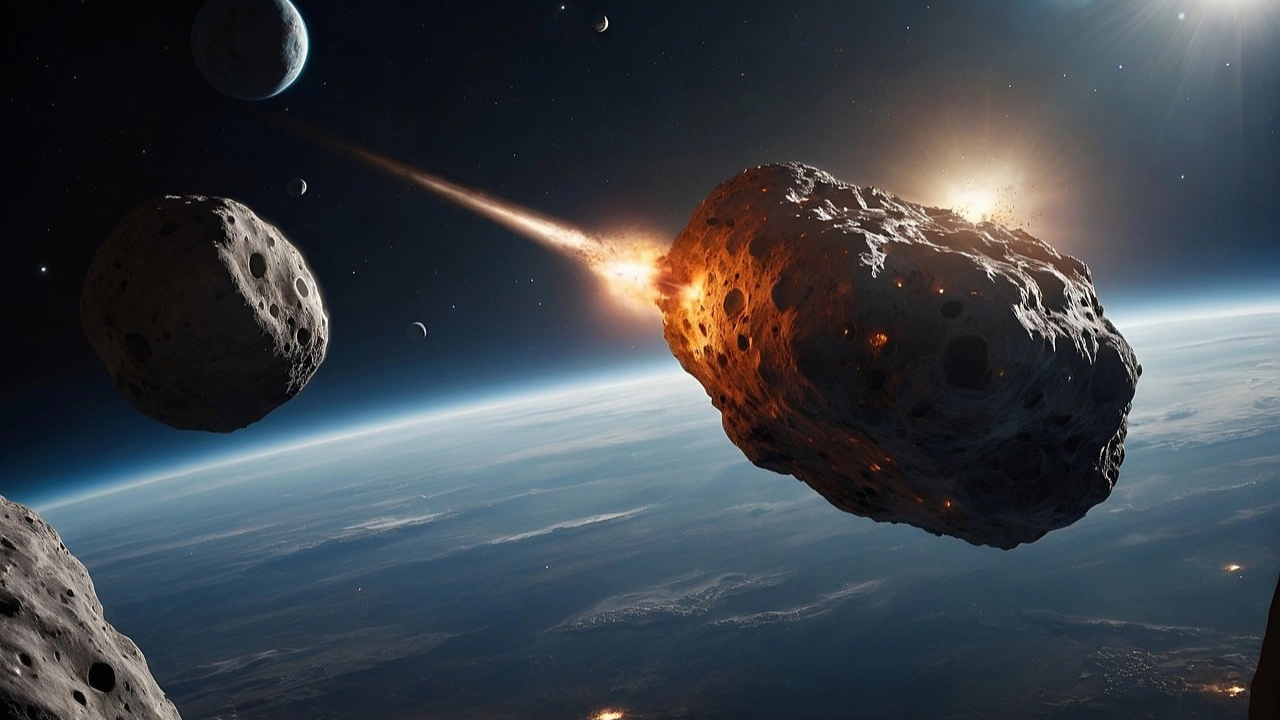
Vocabulary:
- catastrophic /kat-uh-STROF-ik/
- asteroid /AS-tuh-roid/
- simulation /sim-yuh-LEY-shuhn/
- collision /kuh-LIZH-uhn/
- fragment /FRAG-muhnt/
[adjective] – causing sudden and very great harm or destruction
The earthquake had catastrophic effects on the city, destroying many buildings.
[noun] – one of many large rocks that circle the sun
Scientists discovered a new asteroid that could potentially pass close to Earth.
[noun] – a model of a set of problems or events that can be used to teach someone how to do something, or the process of making such a model
The researchers used computer simulations to predict climate changes over the next century.
[noun] – instance of two or more objects coming together with forceful impact
Scientists study the collisions of particles in high-energy physics experiments.
[noun] – a small piece or a part, especially when broken from something whole
After the explosion, fragments of the building were scattered across the street.
Article reading:
Using computer simulations, astronomers were able to model how families of asteroids formed and evolved in the main asteroid belt. These families are groups of asteroids with similar orbits, created when collisions between asteroids sent fragments into space, some of which eventually hit Earth. Astronomer Miroslav Brož from Charles University, one of the researchers, noted that 37% of known meteorites are L chondrites, coming from the Massalia asteroid family. The Karin and Koronis families are responsible for 33% of meteorites, which are called H chondrites. The research also showed that 8% of Earth’s meteorites came from the Flora and Nysa asteroid families, and about 6% are from the asteroid Vesta. This research did not focus on the meteorite that caused the extinction of the dinosaurs 66 million years ago. However, another study suggests that it may have come from beyond Jupiter. NASA’s 2022 DART mission proved that a spacecraft could change an asteroid’s path, helping protect Earth from potential impacts.
Discussion Questions:
- Have you ever seen a meteor shower or a shooting star? If so, what was it like, and where were you? If not, how would you feel if you saw one?
- Do you enjoy learning about space and celestial objects? If so, what interests you the most about it? If not, what subjects do you prefer to learn about?
- Do you agree that understanding meteorites can help us protect Earth from potential impacts?
- What steps do you think should be taken to educate the public about the risks associated with meteorites?
- In your opinion, what is the most important reason for investing in space research?
Summarization
Describe:
- conclude
- evolve
- extinction
- formation
- mission